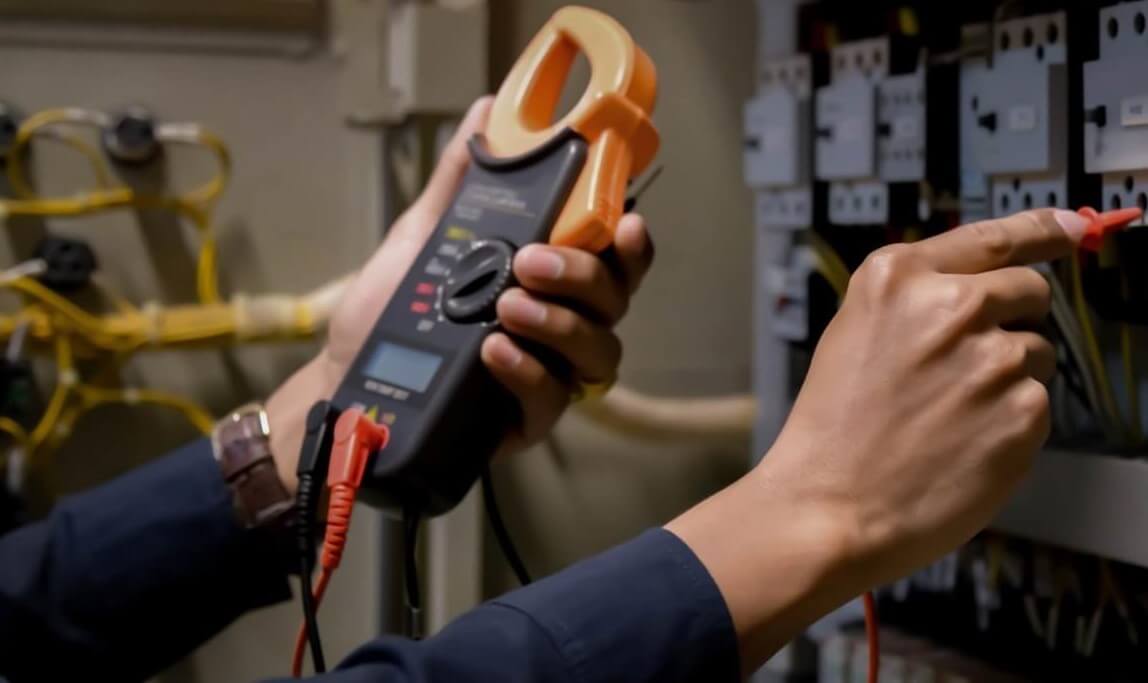Hippolyte Pixii built the first alternator in Paris, France, in 1835. The device used a hand crank to rotate a magnet, creating Alternating Current (AC). Scientists at the time, however, were more interested in Direct Current. In the late 1880s, Thomas Edison installed a DC system in his New York City neighborhood. George Westinghouse then bought the patents for AC motors and transformers from Nikola Tesla, one of the greatest inventors of the time. The battle between the electrical distribution methods led to the "war of currents" and the switch between DC and AC. AC was eventually chosen as the most viable method for power distribution. Although DC high voltage has very low losses and is stable, the main problem was that Direct Current was difficult to convert into higher or lower voltages.

GET IN TOUCH
In a hurry? Call us at 276-285-3841
DC Power
DC power experiencing a slight comeback in recent years. Advances in computers, LED lighting, solar systems, and electric vehicles (EV) have led to more cost-effective methods of converting DC voltage to higher or lower voltages. Only a few companies specialize in DC power, so you will need specialized suppliers if you have specific DC applications. This blog will cover DC electrical measurements in rugged industrial environments. Becker Mining USA understands the challenges posed by DC high voltage and DC current, which is why we seek suppliers that emphasize accuracy, precision, and a deep knowledge of products and their applications.
While many instruments and measuring devices can accurately measure DC currents within a range of up to 50A, very few can measure high DC voltages and currents accurately. The main challenges are cost and accuracy. Knowledge of safety classes and the difference between Dielectric Withstand and isolation voltage levels is often lacking until a problem arises. Here, we present some of the most modern industrial DC measurement and control devices, along with the techniques and tips you need to select the right device. We will start by presenting a quick tutorial on measuring DC voltage, which will help you understand the features DC electrical components should have.
A simple AC current transducer works by using the magnetic flux created by the flow of AC current, as AC voltage can be measured and isolated using a simple transformer. DC Current does not produce this magnetic flux, making accurate measurement a challenge.

GET IN TOUCH
In a hurry? Call us at 276-285-3841
Transducers For DC Voltage And Solution
These transducers are designed to produce a linear signal that is proportional to the sensed DC voltage or current. Understanding the impact of external influences on your measurements is perhaps the most important part of choosing an industrial DC measuring device. You should at least understand:
- Electrical Requirements
- Power Source
- Peak measurement and signal clipping
- Response Time
- Rate of Change (dv/t) and Voltage Transients in Common Mode
- Series Resistance
- Space Limitations (mechanical).
- Thermal Conditions (both resistance to heat and environmental influences).
- Shock and Vibration
- Nearness to other conductors and magnetic fields
- Regulatory Compliance (UL, IEC, CSA, CE, etc.)
Understanding the Application
The first step is to understand the application in detail. Then, you need to consider your technical knowledge of the device, its economic benefits, and how it will affect your measurements. Other considerations for device selection include:
- Safety via high isolation and fault insulation levels (Electrical Separation)
- Accuracy and signal transmission speed
- A high cut-off frequency (Bandwidth) of > 5 kHz
- Reaction time - The inherent delay (t90) should not exceed 100 µs
- Device efficiency by reducing common mode interferences.
It is also important to know that certain systems that measure battery or current can be built with data acquisition features. These include amplifiers, filters, and analog-to-digital converters (ADCs). A current sensor will typically sense current, and its output would need a circuit to convert it into a useful form. This signal may be amplified and digitalized to reduce radio frequency and electromagnetic interference. All of these additions to the circuit affect the measurement resolution and delay at the output.

GET IN TOUCH
In a hurry? Call us at 276-285-3841
DC Voltage
You may be well-versed in DC voltage and current control due to your involvement with DC motors, drives, and energy transmission. You may only need to convert AC current and voltage to DC before using them. This is the way most industrial appliances and machines operate. You will typically need to understand high voltage DC phenomena for the following applications:
- Large motor drives (shunt monitor and direct motor measurement)
- Cycle Converter
- Automatic Voltage Regulator
- Excitation Systems
- Generators
- Rectifier
- Inverter
- DC Link
- Transmission and Distribution of Power
- Transmission
- Distribution
- Collector
- Rectifier & Inverter - DC Link
- Switching
Green Energy, Smart Grid & Electrical Substations
Circuit Breakers for Medium and High Voltage
DC switchgear
DC Power Supplies
Battery Charger and Monitoring
UPS Systems
Cathodic Protection
Protective Relay Application
Power simulation, monitoring, and testing
Contact Us!
Becker Mining USA is always up-to-date with the latest innovations and technologies. Our information on DC voltage and current measurement devices is intended to be useful. Our devices are designed to take into account the properties listed above, and they will help you with your DC electrical measurements.
Products We Offer:
- Explosion Proof Equipment
- Transformers
- Arc Guard
- Longwall Electrical Systems
- Capacitor Trip Devices
- Electrical Equipments like capacitor banks, switch houses, junctions, and splice boxes.
Power up your productivity with Becker Mining's ground fault relays - the reliable and efficient solution for all your power distribution needs. Call us today!